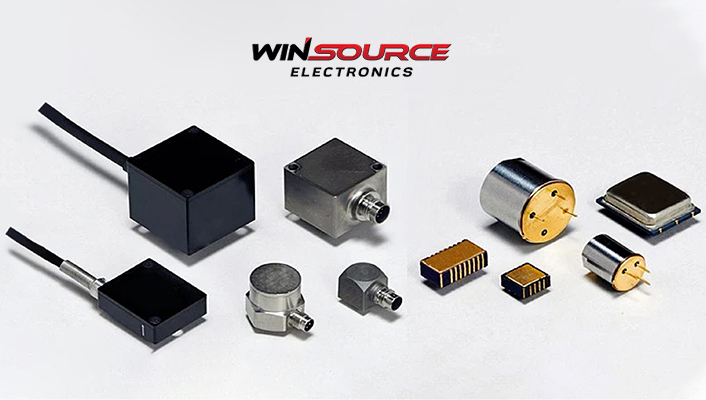
An accelerometer sensor is a common sensor device used to measure the acceleration and tilt angle of an object. It is widely used in many fields, such as smartphones, automobiles, aerospace and motion monitoring, etc. This article will provide an in-depth look at how accelerometer sensors work, the different types of sensors, and their applications in various fields.
Table of Contents
ToggleThe working principle of the accelerometer sensor
The working principle of the accelerometer sensor is based on the definition of acceleration in Newtonian mechanics, that is, the relationship between the force on an object and its mass and acceleration. Accelerometer sensors deduce the force on an object by measuring its acceleration. The following describes the working principles of two common accelerometer sensors.
Piezoelectric effect
Piezoelectric accelerometer sensors use the piezoelectric effect to measure the acceleration of an object. Piezoelectric materials have the property of generating an electric charge when a force is applied. When the accelerometer sensor is subjected to acceleration, the piezoelectric material will generate a corresponding stress, resulting in the accumulation of charge. By measuring the accumulated charge, the acceleration of the object can be calculated. The piezoelectric accelerometer sensor has the characteristics of high sensitivity and fast response, and is suitable for high-precision acceleration measurement.
Principle of mass balance
Mass balance accelerometer sensors use the principle of mass balance to measure the acceleration of an object. It consists of a mass and a spring system. When the acceleration acts on the sensor, the mass block will produce a corresponding displacement, so that the spring system will change. By measuring the displacement or deformation of the spring, the acceleration of the object can be deduced. The mass balance accelerator sensor has the advantages of simple structure and low cost, and is suitable for general acceleration measurement.
Different types of accelerometer sensors
Depending on the measurement principle and application requirements, there are various types of accelerometer sensors. Several common sensor types are described below.
Single axis accelerometer sensor
Single-axis accelerometer sensors measure the acceleration of an object in one specific direction. It can only measure acceleration in a specific axis and requires multiple sensors to measure acceleration in multiple directions. Single-axis accelerometer sensors are commonly used for basic acceleration measurement and tilt angle detection.
Triaxial accelerometer sensor
The three-axis accelerometer sensor can simultaneously measure the acceleration of an object in three mutually perpendicular axes. It integrates three single-axis sensors, which can provide more comprehensive and precise acceleration information. Three-axis accelerometer sensors are widely used in applications requiring multi-axis acceleration measurements such as smartphones, game controllers, and virtual reality devices.
MEMS accelerometer sensor
The micro-electromechanical system (MEMS) accelerator sensor is a kind of accelerator sensor based on micro-nano technology. It adopts the integration of micro-mechanical structure and electronic components, and has the characteristics of small size, low power consumption and high sensitivity. MEMS accelerometer sensors are widely used in mobile devices, automotive safety systems, and motion monitoring.
Fiber Accelerator Sensor
Fiber-optic accelerator sensors use the optical properties of optical fibers to measure acceleration. When acceleration acts on the optical fiber, the optical fiber will undergo a slight deformation, resulting in a change in the optical signal. By measuring the change in the light signal, the acceleration of the object can be deduced. The fiber optic accelerator sensor has the characteristics of high precision and anti-interference, and is suitable for high-demand acceleration measurement and structural health monitoring and other fields.
Application of accelerometer sensor
Accelerator sensors are widely used in various fields. Below are a few common application examples.
Smartphones and Tablets: Accelerometer sensors are used in smartphones and tablets for functions such as automatic screen rotation, gesture recognition, step counting, and gesture control. By measuring the tilt angle and motion state of the device, the accelerometer sensor can realize the interaction and control of smart devices.
Car Safety Systems: Accelerator sensors play an important role in car safety systems. It is used for functions such as vehicle stability control, collision detection, and airbag deployment. By measuring the acceleration and tilt angle of the vehicle, the accelerator sensor can monitor the vehicle’s motion status in real time and take corresponding safety measures as needed.
Motion Monitoring and Fitness Equipment: Accelerometer sensors are used in motion monitoring and fitness equipment to measure acceleration and posture of motion. It is widely used in devices such as smart watches, sports trackers and smart sneakers. By monitoring the user’s steps, running posture and exercise intensity, the accelerometer sensor can provide accurate exercise data and fitness guidance to help users optimize training effects.
Aerospace field: Accelerator sensors play an important role in the aerospace field. It is widely used in aircraft attitude control, aviation navigation and flight data recording, etc. By measuring the acceleration and tilt angle of the aircraft, the accelerometer sensor can provide key flight parameters to ensure the stability and safety of the aircraft.
Industrial control and automation: Accelerometer sensors are widely used in the field of industrial control and automation. It can be used in applications such as vibration monitoring, fault diagnosis of mechanical equipment, and structural health monitoring. By measuring the acceleration and vibration of the equipment, the accelerometer sensor can monitor the status of the equipment in real time and take timely measures to improve the reliability and efficiency of the equipment.
To sum up, the accelerometer sensor, as an important sensor device, has the ability to measure the acceleration and tilt angle of an object. Through different types of sensors, such as single-axis sensors, three-axis sensors, MEMS sensors, and fiber optic sensors, etc., accelerometer sensors can be used in many fields such as smartphones, automobiles, aerospace, and industrial control. The wide application of accelerator sensors has promoted the development of modern technology and brought more convenience and safety to our life.

COMMENTS